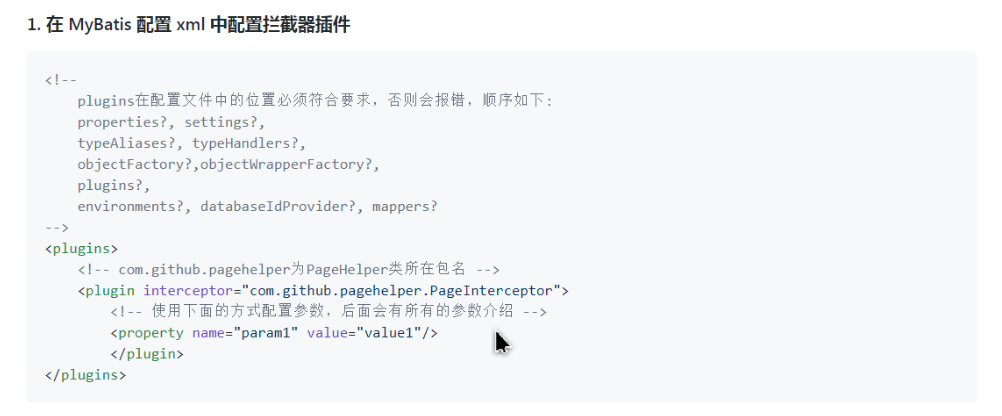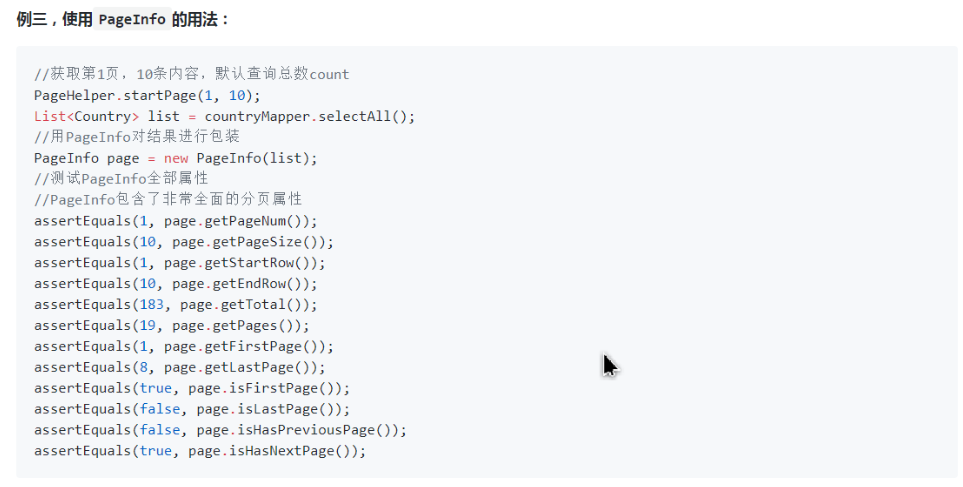1.动态sql语句
if
if where 配合使用
<select id="selectByWhere" resultType="com.alibaba.wlq.bean.Users"> select * from users <where> <if test="name!=null and name !=''"> and name = #{name} </if> <if test="sex!=null and sex!=''"> and sex = #{sex} </if> </where> </select>where的功能是在满足条件的第一个sql语句前面添加where,如果第一个满足条件的sql语句前面有and或者or,那么where标签的功能就是替换掉它
if set配合使用
<update id="updateUsers"> update users <set> <if test="name!=null and name !=''"> name = #{name}, </if> <if test="age>0"> age = #{age}, </if> <if test="sex!=null and sex!=''"> sex = #{sex}, </if> </set> where id = #{id} </update>set标签我理解的功能就是在第一个满足if条件的sql语句前面增加set并且会将最后一个满足if条件的sql语句的逗号给去掉防止sql语句出错
if + trim代替where/set标签
prefixprefixOverridessuffixsuffixOverrideschoose(when otherwise)
有时候我们并不想应用所有的条件,而只是想从多个选项中选择一个。而使用if标签时,只要test中的表达式为true,就会执行if标签中的条件。MyBatis提供了choose 元素。if标签是与(and)的关系,而choose比傲天是或(or)的关系。 choose标签是按顺序判断其内部when标签中的test条件出否成立,如果有一个成立,则choose结束。当choose中所有when的条件都不满则时,则执行otherwise中的sql。类似于Java 的switch 语句,choose为switch,when为case,otherwise则为default。choose会从上到下选择一个when标签的test为true的sql执行。安全考虑,我们使用where将choose包起来,放置关键字多于错误。
sql字段
<sql id="selectByAgesColumns"> id,name,age,sex </sql> <select id="selectByAges" resultType="com.alibaba.wlq.bean.Users"> select <include refid="selectByAgesColumns"/> from users <if test="ages.size()>0"> <where> <foreach collection="ages" open="age in(" close=")" separator="," item="age" > #{age} </foreach> </where> </if> </select>foreach(同上)
对于动态SQL 非常必须的,主是要迭代一个集合,通常是用于IN 条件。List 实例将使用“list”做为键,数组实例以“array” 做为键。foreach元素是非常强大的,它允许你指定一个集合,声明集合项和索引变量,它们可以用在元素体内。它也允许你指定开放和关闭的字符串,在迭代之间放置分隔符。这个元素是很智能的,它不会偶然地附加多余的分隔符。
注意:你可以传递一个List实例或者数组作为参数对象传给MyBatis。当你这么做的时候,MyBatis会自动将它包装在一个Map中,用名称在作为键。List实例将会以“list”作为键,而数组实例将会以“array”作为键。
这个部分是对关于XML配置文件和XML映射文件的而讨论的。下一部分将详细讨论Java API,所以你可以得到你已经创建的最有效的映射。
2.逆向工程(generator)
由表帮我们生成bean、dao、xml文件
http://www.mybatis.org/generator/index.html
引入mybatis-generator的jar包
创建generator的配置文件
<?xml version="1.0" encoding="UTF-8"?> <!DOCTYPE generatorConfiguration PUBLIC "-//mybatis.org//DTD MyBatis Generator Configuration 1.0//EN" "http://mybatis.org/dtd/mybatis-generator-config_1_0.dtd"> <!-- generatorjar包的路径 --> <generatorConfiguration> <classPathEntry location="/E:/generator/mybatis-generator-core-1.3.5.jar" /> <!-- 加载驱动 --> <context id="DB2Tables" targetRuntime="MyBatis3"> <commentGenerator> <property name="suppressDate" value="true"/> <property name="suppressAllComments" value="true" /> </commentGenerator> <jdbcConnection driverClass="com.mysql.jdbc.Driver" connectionURL="jdbc:mysql://localhost:3306/mybatis" userId="root" password="123456"> </jdbcConnection> <!-- 是否允许大数字 --> <javaTypeResolver > <property name="forceBigDecimals" value="false" /> </javaTypeResolver> <!-- 实体类文件配置 --> <javaModelGenerator targetPackage="com.alibaba.wlq.bean" targetProject="./src"> <property name="enableSubPackages" value="true" /> <property name="trimStrings" value="true" /> </javaModelGenerator> <!-- 映射文件配置 --> <sqlMapGenerator targetPackage="com.alibaba.wlq.mapper" targetProject="./resources"> <property name="enableSubPackages" value="true" /> </sqlMapGenerator> <!-- dao接口配置--> <javaClientGenerator type="XMLMAPPER" targetPackage="com.alibaba.wlq.dao" targetProject="./src"> <property name="enableSubPackages" value="true" /> </javaClientGenerator> <!-- --> <table schema="mybatis" tableName="users" domainObjectName="Users" enableCountByExample="false" enableDeleteByExample="false" enableSelectByExample="false" enableUpdateByExample="false"> <property name="useActualColumnNames" value="true"/> <generatedKey column="ID" sqlStatement="DB2" identity="true" /> <columnOverride column="DATE_FIELD" property="startDate" /> <ignoreColumn column="FRED" /> <columnOverride column="LONG_VARCHAR_FIELD" jdbcType="VARCHAR" /> </table> </context> </generatorConfiguration>运行generator
import java.io.File;
import java.util.ArrayList;
import java.util.List;
import org.mybatis.generator.api.MyBatisGenerator;
import org.mybatis.generator.config.Configuration;
import org.mybatis.generator.config.xml.ConfigurationParser;
import org.mybatis.generator.internal.DefaultShellCallback;
public class generatormain {
public static void main(String[] args) throws Exception{
// TODO Auto-generated method stub
List<String> warnings = new ArrayList<String>();
boolean overwrite = true;
File configFile = new File("resources/generator.xml");
ConfigurationParser cp = new ConfigurationParser(warnings);
Configuration config = cp.parseConfiguration(configFile);
DefaultShellCallback callback = new DefaultShellCallback(overwrite);
MyBatisGenerator myBatisGenerator = new MyBatisGenerator(config, callback, warnings);
myBatisGenerator.generate(null);
}
}
3. PageHelper


